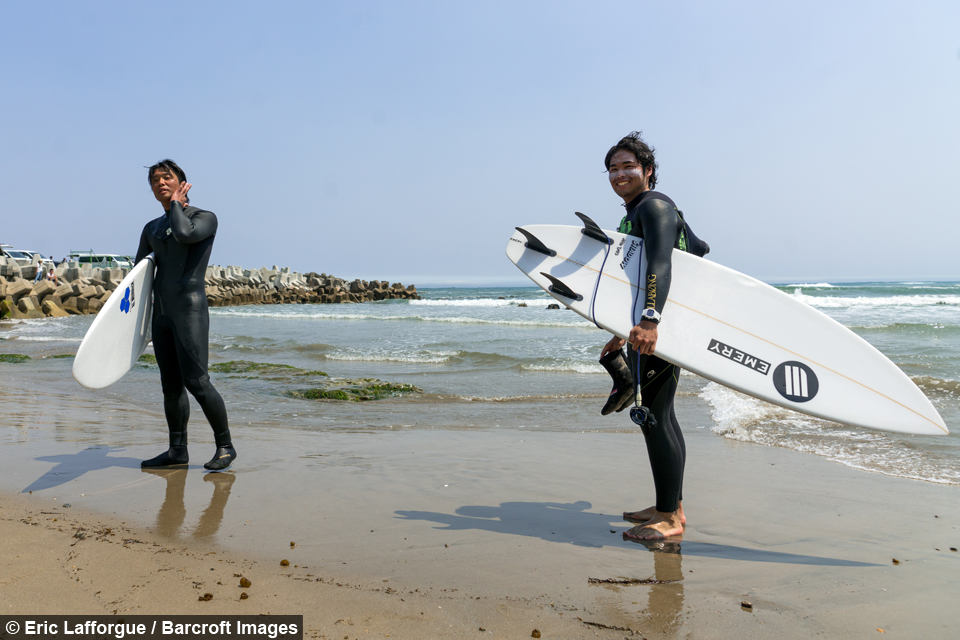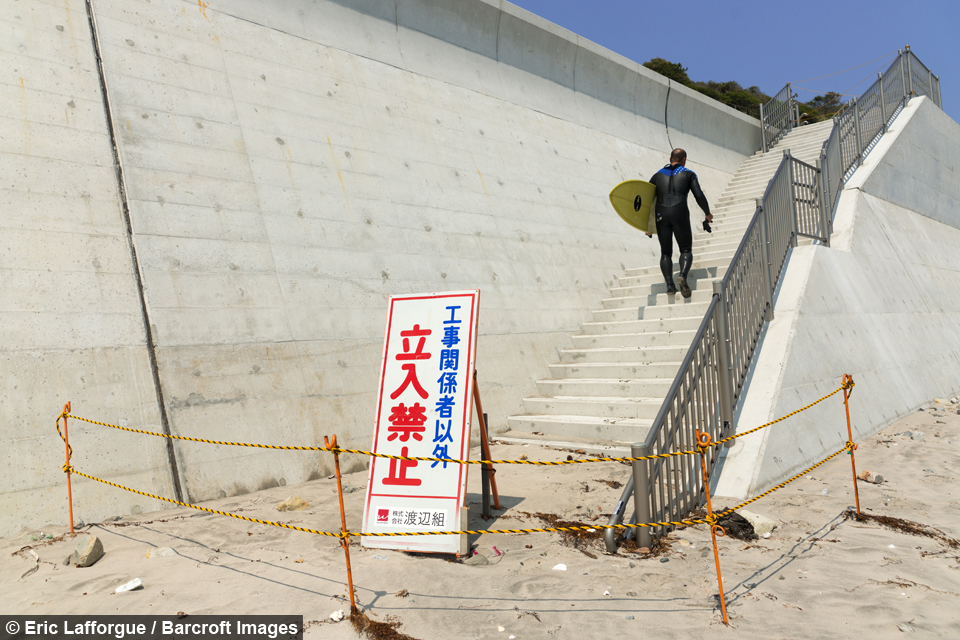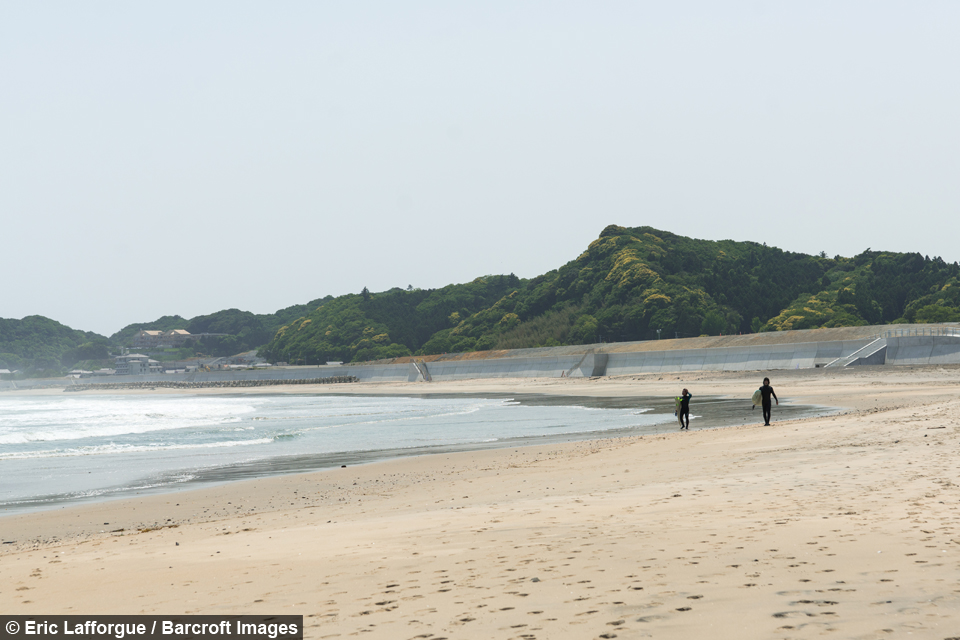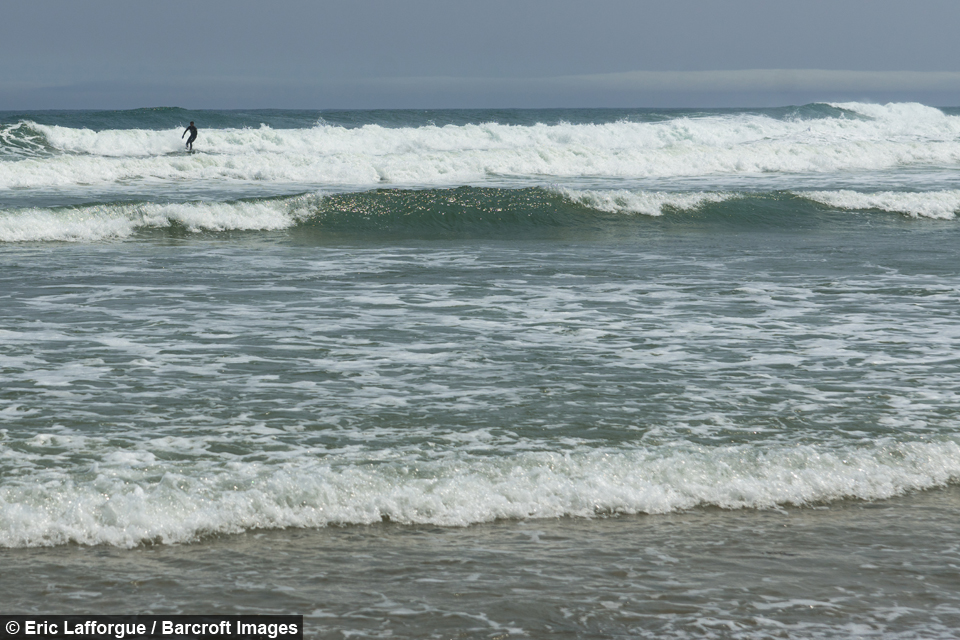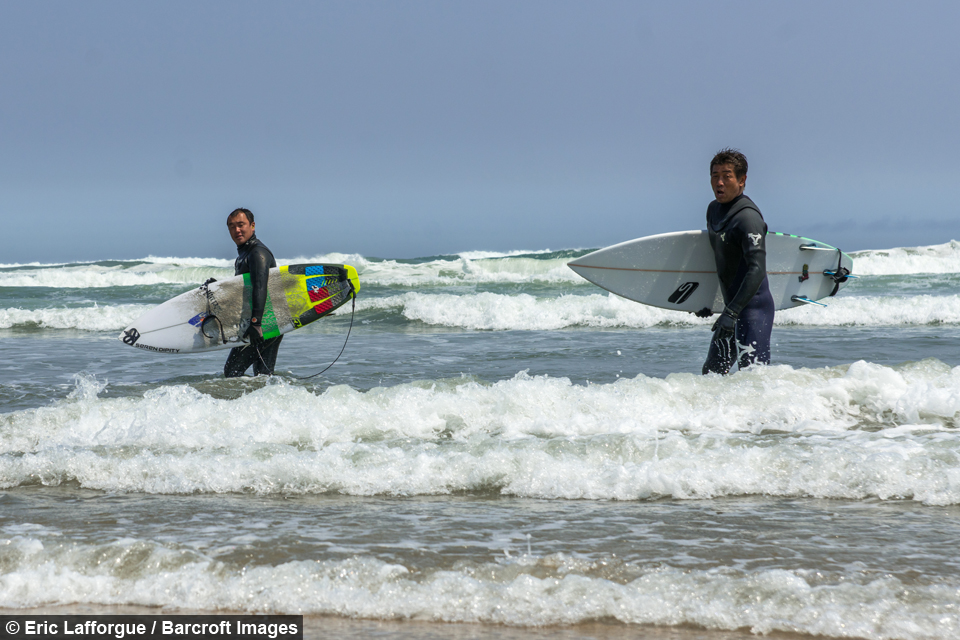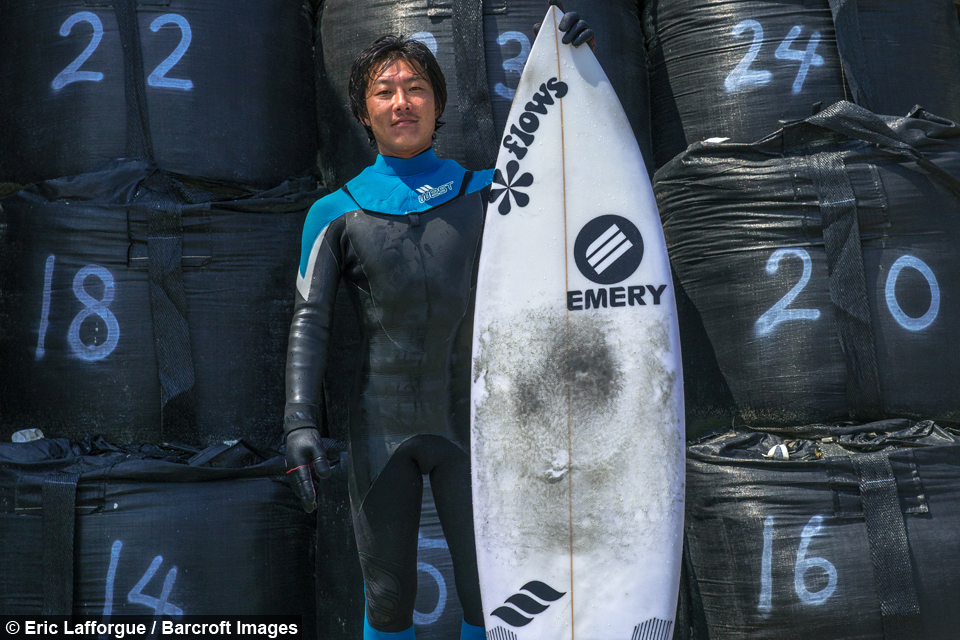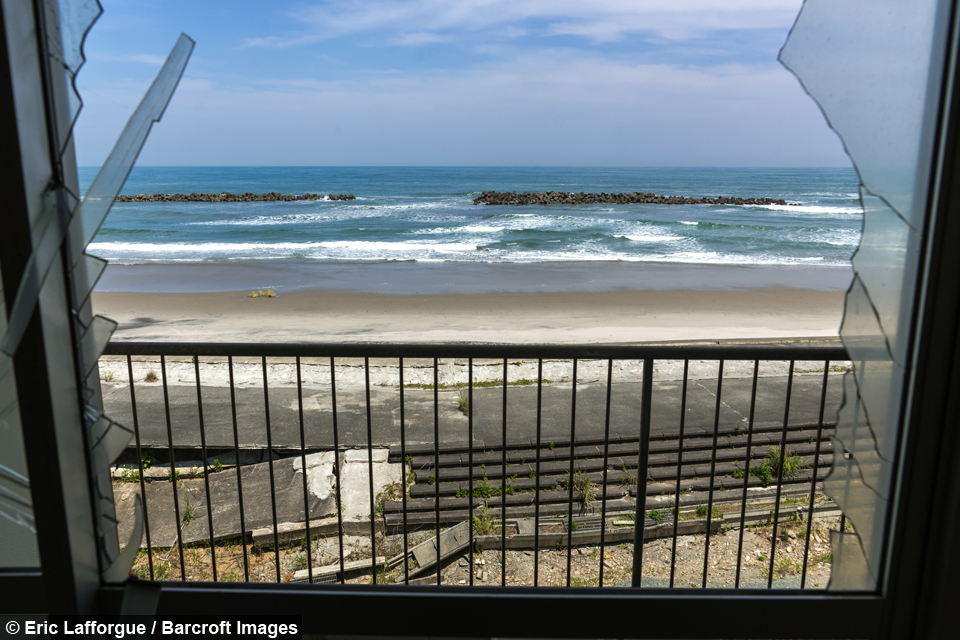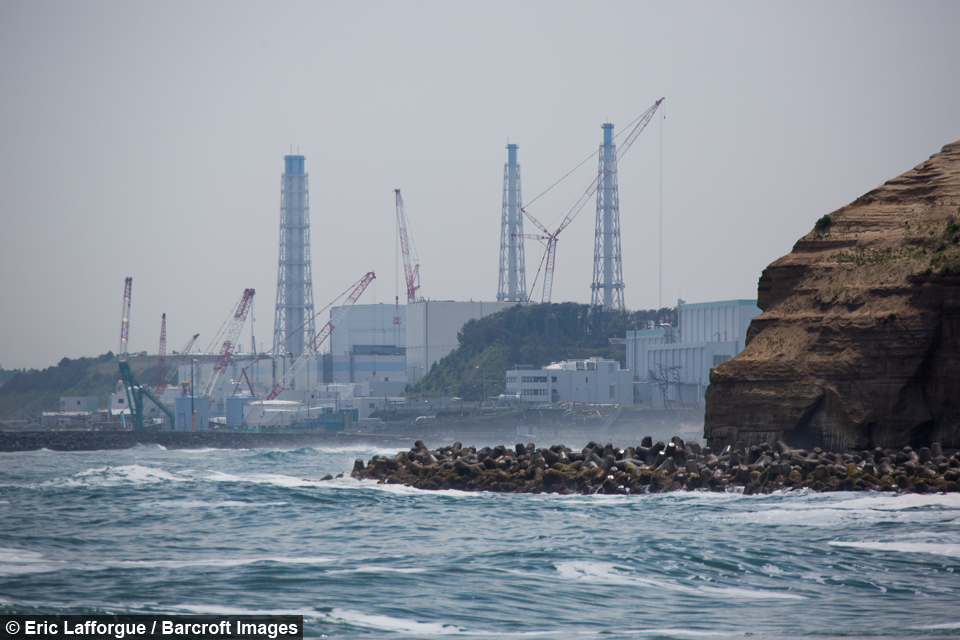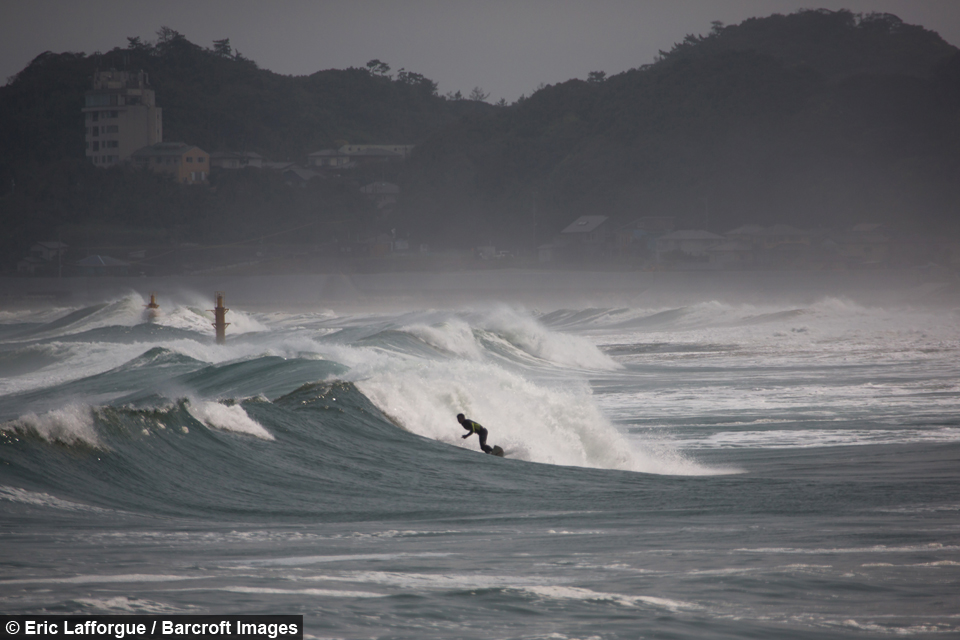Dedicated to the waves: Surfers risk lives on radioactive Fukushima beach
By Katie Rawlins
Scroll down for the full story
Few people can be found within the radiation risk zones surrounding Fukushima nuclear plant, but among the protection clad workers are a few brave surfers who dive past the warning signs to head into radioactive waters.
Photographer Eric Lafforgue stumbled across the surfers as he passed through the area documenting some of the decontamination efforts in desolate towns affected by the disaster.
He said: “Very few people have returned to this area and I could not have imagined finding them here.
“According to them, this place is one of the best in Japan to surf as the waves are big and very good to surf.”
Disaster struck Japan on 11th March 2011 in the shape of a tsunami triggered by a 9.0 magnitude earthquake.
The nuclear power plant in Fukushima was among those hit by the wave - causing a level seven nuclear disaster equal to the Chernobyl plant catastrophe.
Eric said: “ According to a man working in the Fukushima power plant - who spoke anonymously - the main risk for him is the water as contaminated water is still sent into the sea.
“He said he would never have a swim there.
“I did not have the information from the Fukushima worker when I met the surfers.
“So I even went into the water to take pictures of them.
“You feel uncomfortable even if the risk is low.
“The surfers who stay out for hours everyday should meet the nuclear workers - they swallow water but on the beach men work with protective gear removing sand bags labelled ‘radioactive waste’”.
The surfers, however, seem undeterred by the possible threat posed and continue to ride the waves of the now radioactive beach - once a popular surf spot before the disaster.
Eric added: “They say their passion is bigger then the risks and the truth will only be known in 20 years."
Following the disaster, roughly 800-square-kilometres was deemed a permanent exclusion zone or ‘red zone’ - and saw thousands of people evacuated never to return.
Eric said: “Houses are almost empty except for a few old people, but people come back every week to take care of their houses. So they are all clean apart from the gardens that are wild as the grass is radioactive so people do not cut it."
While the long term repercussions of the radiation leaked from the nuclear power plant are yet to be known the immediate impact was all too real for around 150,000 people who lost their homes forever.
Lafforgue said: “I was sad thinking about all the lives broken or those who survived and will never come back.
“Many lived in refugee centres for the past five years.”
He added: “I hope people will understand that time does not erase the pain or consequences of the catastrophe.
“The gap is huge between what you read in the news and what you feel on the ground.”
